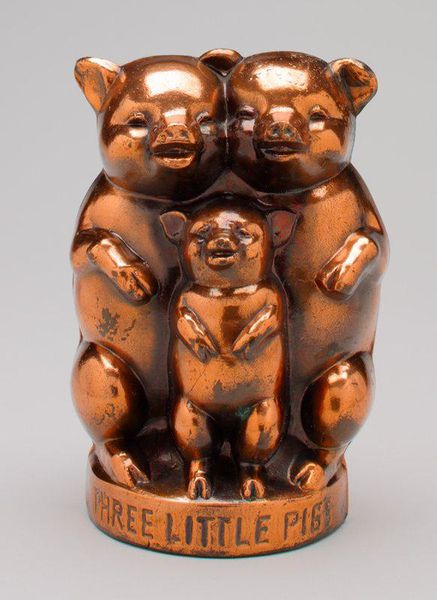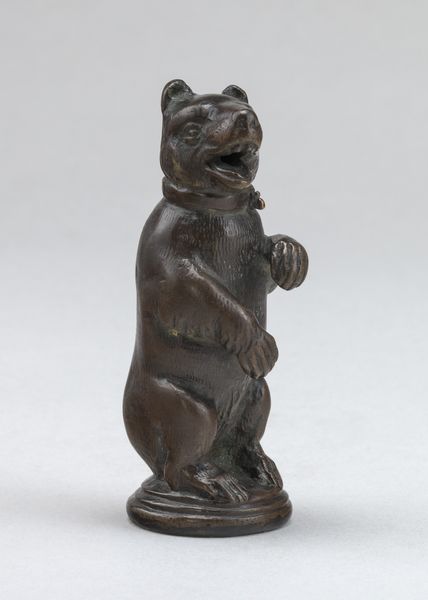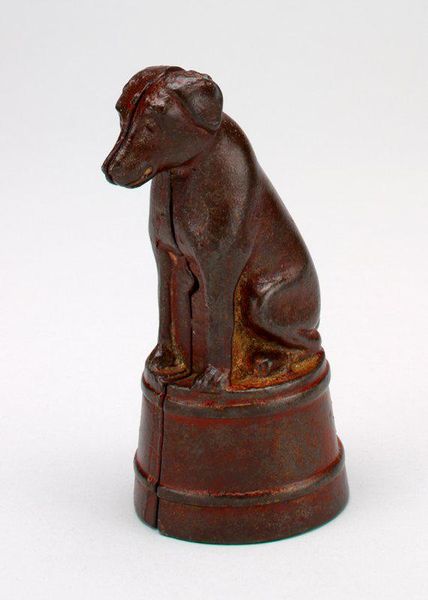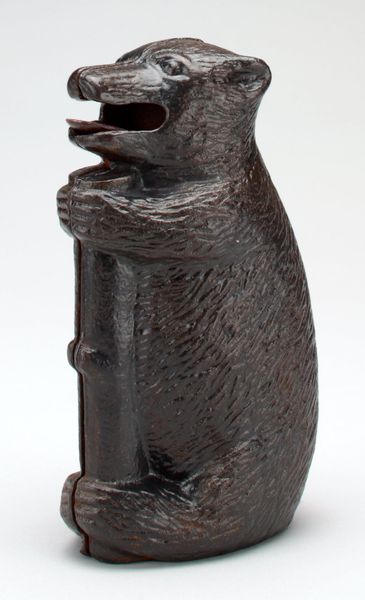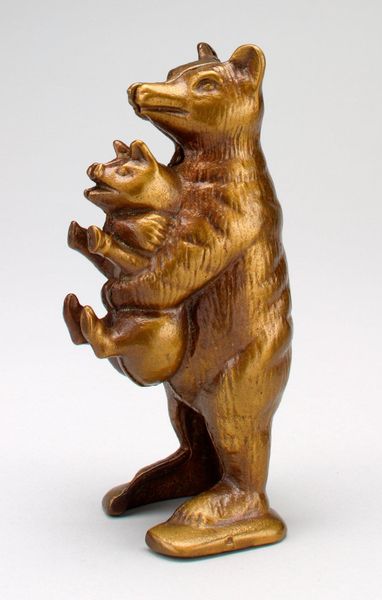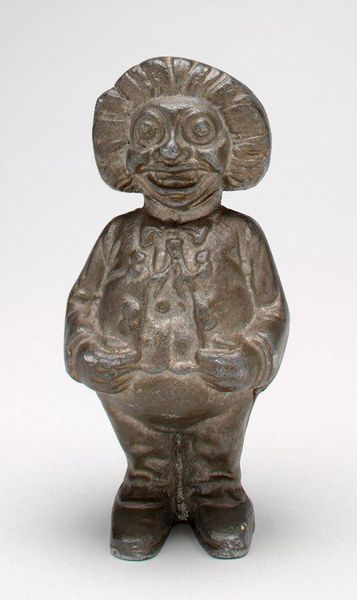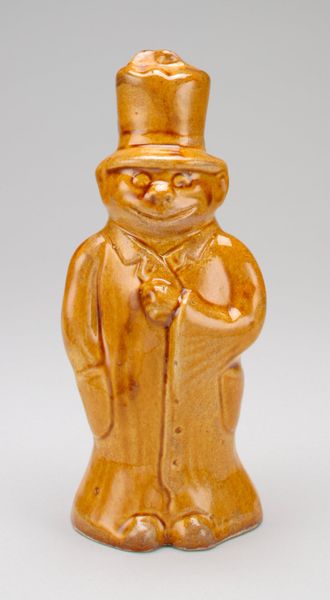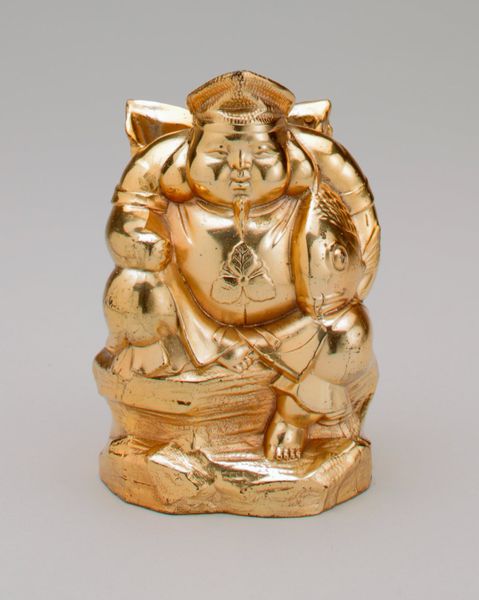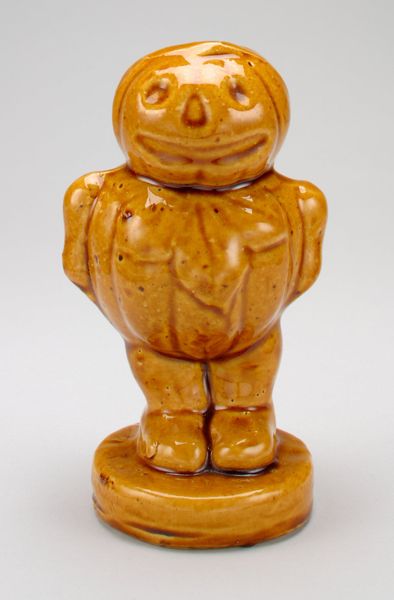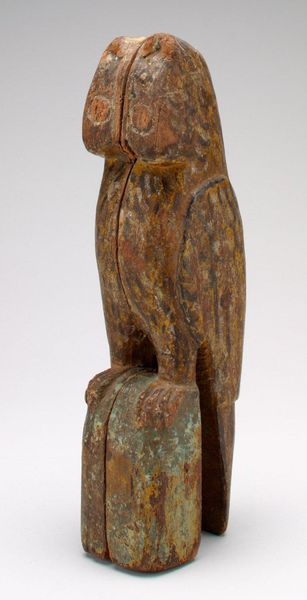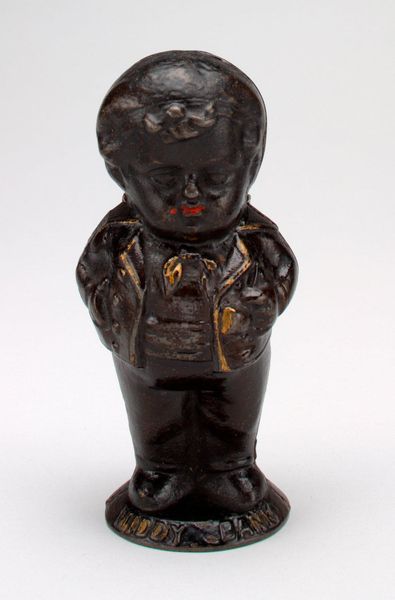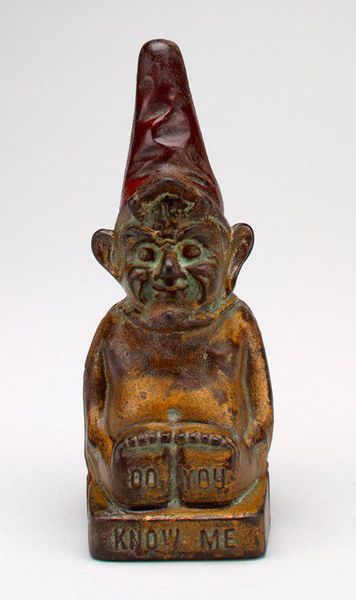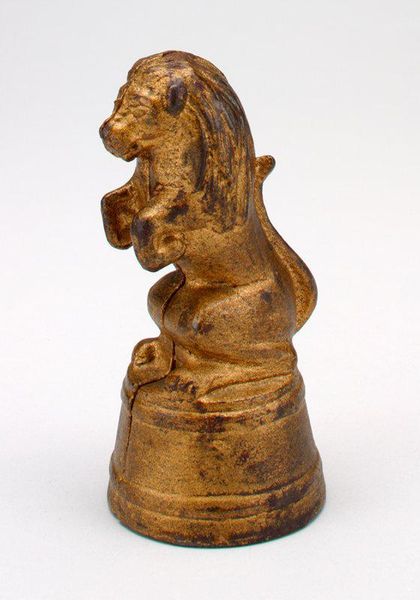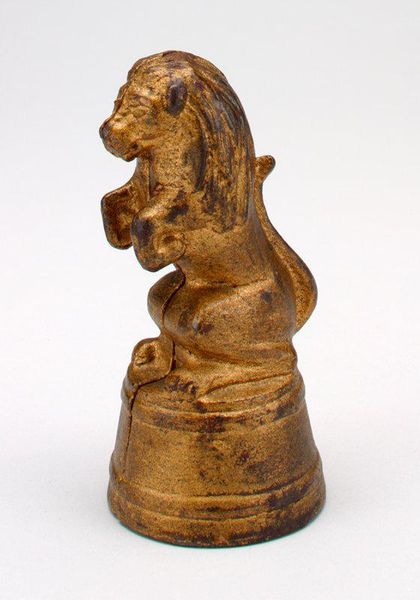
bronze, sculpture
#
sculpture
#
bronze
#
sculptural image
#
figuration
#
sculpture
#
decorative-art
Dimensions: 6 3/16 x 2 13/16 x 2 7/8 in. (15.72 x 7.14 x 7.3 cm)
Copyright: No Known Copyright
Editor: This bronze sculpture, entitled "-The Wise Pig- still bank," dates back to around 1929. The texture of the metal and the slightly eerie smile of the pig create an unsettling mood for a child's toy. What do you see in this piece beyond just the surface? Curator: Beyond the pig itself, I'm struck by how this object embodies the social context of its time. Look at the inscription. The repeated phrases "Save a penny" points to a culture obsessed with thrift. What labor went into the industrial production of this object, to reinforce these ideals about frugality, even to children? Editor: That's a perspective I hadn't considered. So, the *production* itself is a statement? Curator: Absolutely. Consider the use of bronze – a relatively durable, though cheap, material for a child's object. It’s not just about containing money; it’s about the systematic creation of values. Mass production shaped behaviors related to money from a very young age. Editor: That makes me think about the 'decorative art' categorization. Isn't that term a little reductive, considering its societal implications? Curator: Exactly! That category can obscure how "craft," even mass-produced craft like this bank, is intertwined with economic systems and enforces capitalist norms. It is not *merely* decorative, it's ideological. Editor: This has definitely given me a new perspective on everyday objects as reflections of economic realities. Curator: And understanding that material production creates ideologies, it might help you to approach other artworks as more than just aesthetic experiences.
Comments
No comments
Be the first to comment and join the conversation on the ultimate creative platform.
